Among the numerous diseases of the joints is the most common osteoarthrosis.With the development of this pathology, the patient begins to have problems with the mobility of the limbs, swelling, inflammation and intense pain syndrome occurs.And if we talk about the causes of knee arthrosis at a young age, then they can include many predisposing factors.
General information
The development of deformation processes in the area of the knee joint in official medicine is called gonarthrosis.The disease is accompanied by degenerative-dystrophic phenomena in the cartilage of hyaline, which develop in stages and deliver many problems to the patient.The main signs of the disease include:
- Pain syndrome.
- Hamal station.
- Inflammation.
- Edema.
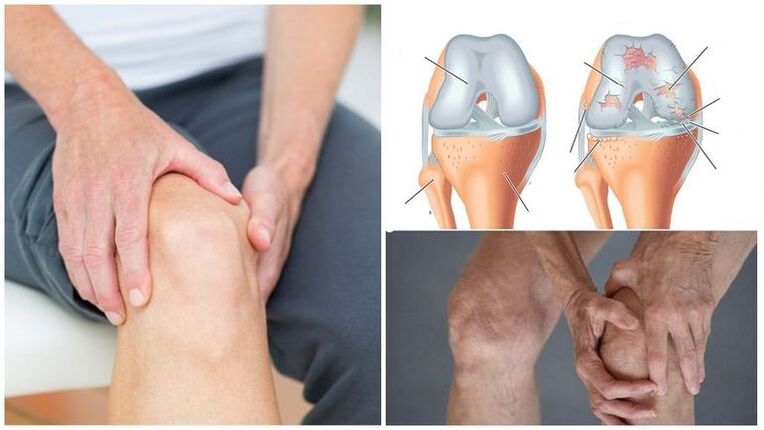
Among the various forms of arthrosis, knee damage is considered the most common.In most cases, the problem progresses in women aged 40 years.It can also occur in young people against the background of mechanical injuries or colossal stress.For example, professional athletes are the most vulnerable of this pathology.
If you do not take appropriate measures in the early stages of the development of the disease, then over time gonarthrosis will become a severe form, which will lead to irreversible consequences.The size of the joint will begin to increase at incredible speed, the deformation process will begin in the cartilage and bones and any physical activity will be accompanied by severe pain and discomfort.At least, the patient will completely lose the ability to move independently.
Many mistakenly believe that arthrosis and arthritis are the same pathologies.However, the first disease implies an acute inflammatory reaction, and the second - a number of chronic diseases of degenerative nature.If the patient has the symptoms of both problems, it can be diagnosed with arthros-arthritis.
The causes of knee arthrosis joint
The causes of the disease are very different, so it is problematic to distinguish a single one.In most cases, the development of the problem occurs with the occurrence of several provocative factors causing a disorder.Modern medicine identifies such mechanisms of arthrosis:
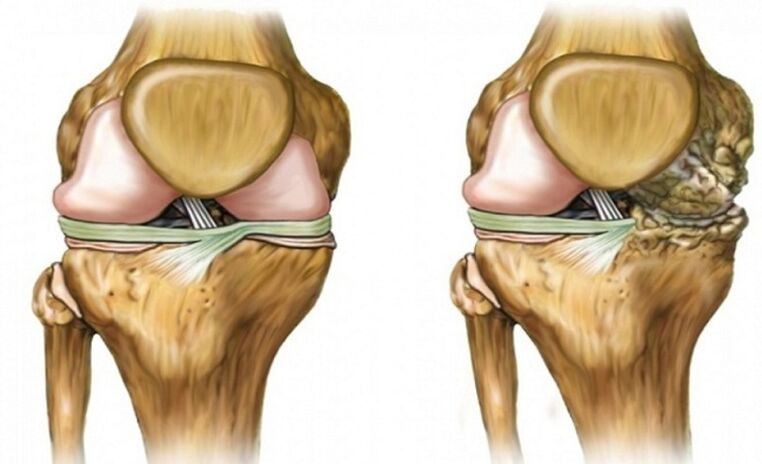
- Primary.This is a natural process that occurs in people 40 years of age and is explained by the aging of body tissues.The main mechanism for the development of arthrosis also contributes to related factors, including obesity, heredity or high loads.
- Secondary - it covers 30% of all arthrosis diseases.The cause of the occurrence is related to the transfer of mechanical injuries, fractures of the lower legs or the ruptures of the ligaments.The first symptoms of pathology can occur several years after the damage.However, in severe injuries, this can happen in 2-3 months.
There is another mechanism of development that has 7-8% of cases of arthrosis.This is this: if a person of 40 years suddenly started running or professional sports, it can lead to rapid dystrophic and degenerative changes.In addition, arthrosis also manifests itself with concomitant diseases, including various forms of arthritis, gout, overweight, etc.
The reasons for the development of the disease are often associated with intense loads, weight lifting, or frequent increases in steps (especially in old age).Patients who have suffered spinal injuries or neurological diseases also fall into the risk zone.
In most cases, the predisposing factor in the occurrence of gonarthrosis is a muscle spasm in the anterior surface of the thigh.As the onset of the first pain, the pathology may not manifest for a long time and the only signs will be characterized by fatigue and heaviness in the legs.
Stages of development and symptoms
Once you find out what arthrosis of the knee joint, you can begin to study the main symptoms and stages of the disease.Experts say the pathology is characterized by slow progression as negative symptoms increase.Depending on the patient's ability to work, three stages of arthrosis are distinguished:
- First.
- The second.
- The third.
It should be noted that gonarthrosis has no acute form, of course, since it is a degenerative process of chronic nature.As for the term "acute arthrosis", in most cases it refers to the third stage with weighted symptoms.
The first stage
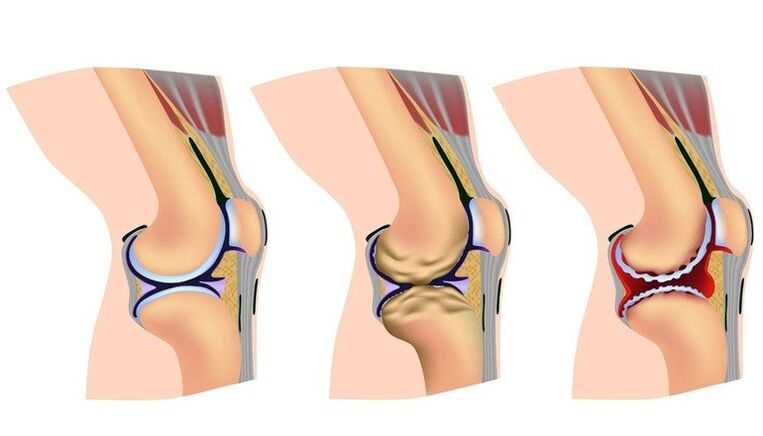
In the first stage of gonarthrosis in the joint, the circulation of a special fluid begins to be disturbed, which nourishes and lubricates it.Special changes in the structure are not noticeable and cartilage tissue is slightly inflamed.
The initial stage of the development of arthrosis is accompanied by mild discomfort and a sense of stiffness during movement.The patient becomes problematic to climb the steps, to make distant competitions, or to stand on his feet for a long time.Any increased activity leads to the appearance of knee pain.However, with the smallest break, the pain syndrome is localized and disappears.
The further progression of pathology increases pain, but the patient's ability to work is not disturbed in any way.In this regard, the patient continues to lead the usual lifestyle.
It is not easy to determine the development of arthrosis in the initial stages.The fact is that people may simply not notice the symptoms by attributing everything to fatigue.
Second and third degrees
It may take several months between the initial symptoms to the second stage.At the same time, the patient may forget about the first symptoms for some time and continue to live a regular life.But the progression of degenerative changes will have more serious consequences, namely:
- Increased pain at every load.
- Hamal station.
- Edema.
- Inflammation.
In addition to the symptoms described, crunching in the knee joints will also occur, which is explained by a violation of the structure.Cartilage tissue will begin to become sharper and the volume of synovial fluid, which lubricates and nourishes the joint, will decrease significantly.
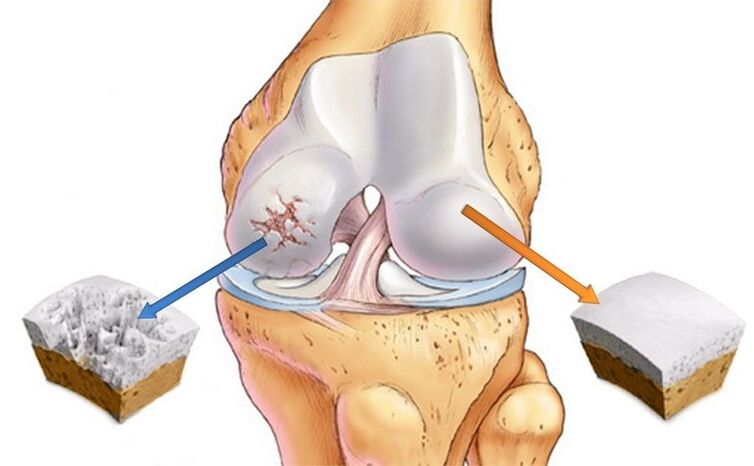
If the patient does not start treatment of the second stage of arthrosis, this will lead to the development of the third, more dangerous.This is a very neglected form of pathology in which the joint loses its main functionality and the patient's ability to work is at risk.
In this case, the content of the synovial fluid in the cartilage tissue becomes minimal, the cartilage loses its previous thickness, and the bones thicken.In the affected area, lymph fluid also appears and an inflammatory process is started.
In advanced form, gonarthrosis has such symptoms:
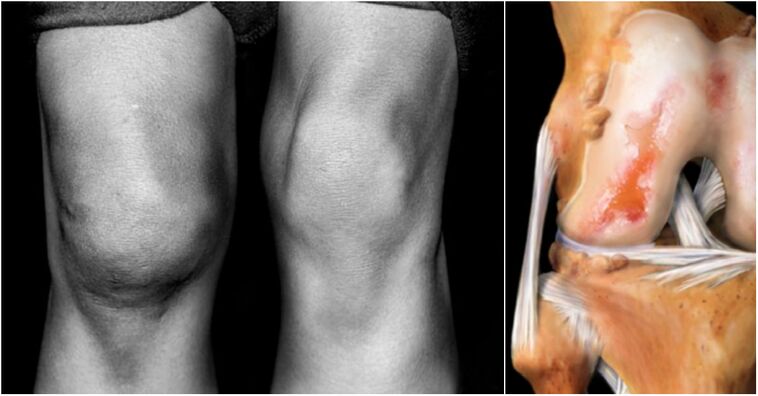
- Excessively severe pain syndrome that occurs in any movement.In addition, even if the patient is in a lying or sitting position without activity, he or she may suddenly feel severe pain.
- The motor skills of the knee joint are very limited.
- The joint experiences a lot of changes, increases size and deforms.You can notice such consequences with the naked eye.
As for the syndrome of acute pain in the third stage of arthrosis, it occurs spontaneously and is practically not localized by the painkillers available in pharmacies.In this case, the prosthesis of the joint is the only way out of the situation.
In particularly complex forms of gonarthrosis, experts distinguish another stage in which the destruction of the joint bag begins.Unfortunately, in modern medicine there are no effective ways to treat pathology that has undergone 2 and 3 stages.In this regard, doctors recommend in time for help in the clinic if the less suspicion of gonarthrosis is found.
Diagnostics
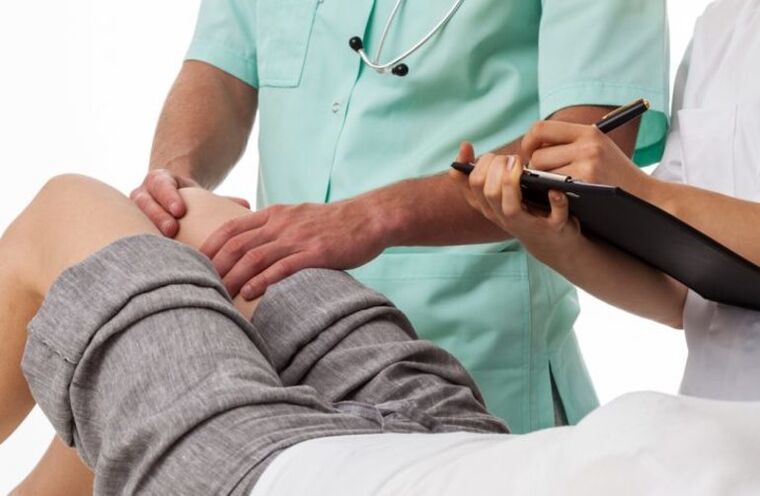
Understanding the understanding of the causes of gonarthrosis, it is important to know about the proper diagnosis of pathology.After all, you should be able to distinguish it from other diseases that may have similar symptoms.
A comprehensive examination is used to determine the development of the disease, which includes biochemical blood test, radiography, MRI and ultrasound.It should be noted that with different stages of arthrosis, the blood composition remains almost similar, so all changes from the norm indicate the presence of another problem.
In connection with this characteristic, it is possible to make an accurate diagnosis and to determine the presence of gonarthrosis only with the help of X -ray examination.The photograph clearly shows disorders in the structure of the joints and bones, and also determines the surface defects.
Despite the high accuracy of the diagnosis, X -ray cannot examine soft tissues, including cartilage and meniscus.Ultrasound, MRI or CT are used as an additional diagnostic product.
If you determine the development of the pathology over time and start complete treatment, it will avoid irreparable consequences and prevent the problem of moving to more serious stages.However, due to the specific course of the disease, many patients do not even think that joint pain, stiffness and other changes are not the result of fatigue after hard work, but a sign of the onset of degenerative processes.
Treatment methodology
There are many ways to treat gonarthrosis right now.They may differ in the principle of action, a list of tasks that must be solved, and individual characteristics.Complete treatment is used for a more productive fight against the disease, which is aimed at:
- Localization of pain.
- Improve mobile features.
- Improve the condition of cartilage tissues and the patient as a whole.
- Strengthening the muscle structure that surrounds the affected joint.
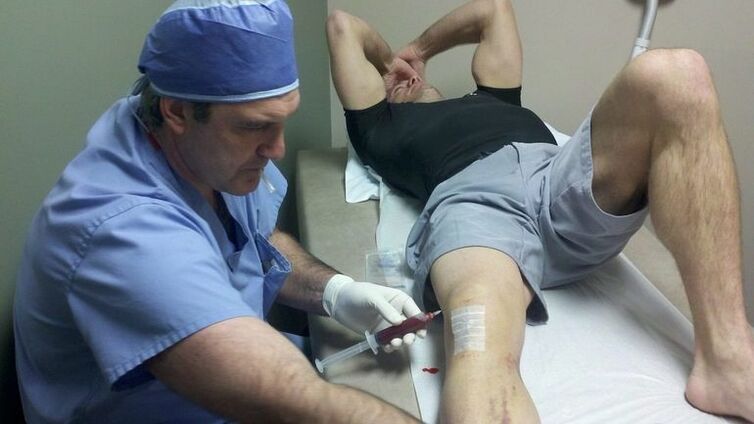
The most common methodology for the treatment of arthrosis is physiotherapy.It includes a set of special procedures that are aimed at strengthening muscle tissues and restoring blood circulation.
During physiotherapy treatment, the patient notices a significant improvement in well -being and delaying degenerative processes.However, it is strictly forbidden to start the procedure independently, as incorrectly calculated loads can only worsen the problem.
In trying to get rid of pain, to relieve swelling and inflammation, it is necessary to use a number of non -steroidal drugs.These include ibuprofen, ketoprofen, diclofenac and others.The task of drugs is to quickly relieve the pain for more productive treatment in the future.
If the use of non -steroidal anti -inflammatory drugs does not produce any results, you will need to resort to the use of corticosteroids with a more pronounced anti -inflammatory effect.However, it is not recommended to use painkillers for a long period of time, as they only reduce the symptoms, slowing down the process of tissue repair.If, after taking the tablet, the pain disappears, it is better to refuse medication.
External funds and surgery
The reasons for the arthrosis of the joint combat with the help of various ointments, compresses and creams.And although these drugs do not cure arthrosis, they improve well to be and reduce pain.Among the most effective external agents are the warming and anti -inflammatory ointments.
With the development of the second stage of the disease, the patient may prescribe intracematic injections of corticosteroids, namely:
- Betamethason.
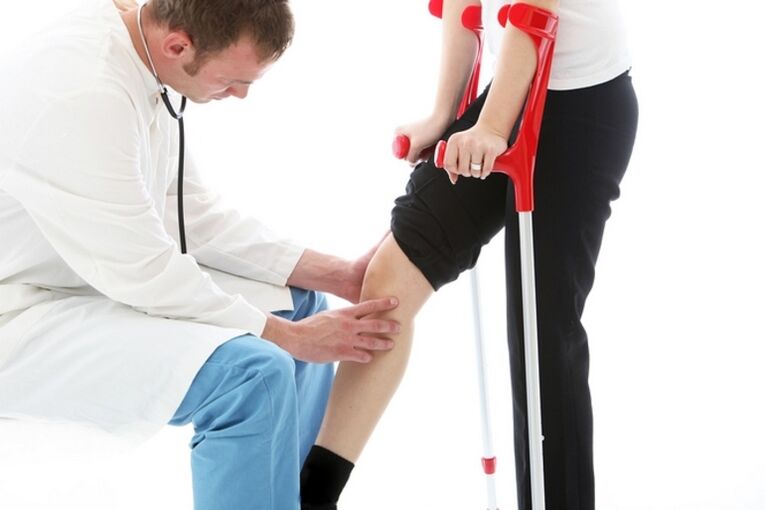
When choosing the medicine, it is necessary to take into account its patient tolerance.If we are talking about corticosteroids, then they are able to effectively eliminate the pain, but not deal with the severe stages of arthrosis.
If the disease is at the last stage, which is considered the most dangerous, the operation will be the only way out.In this case, you will need to perform surgical decompression of the joint bag to expand the lumen between the bones and restore cartilage surfaces.
Whether this approach will be effective depends on many factors.First of all, you should consider the severity of the disease.If it is not the most planned, it is quite possible to restore the former mobility of the joints and get rid of the pain.
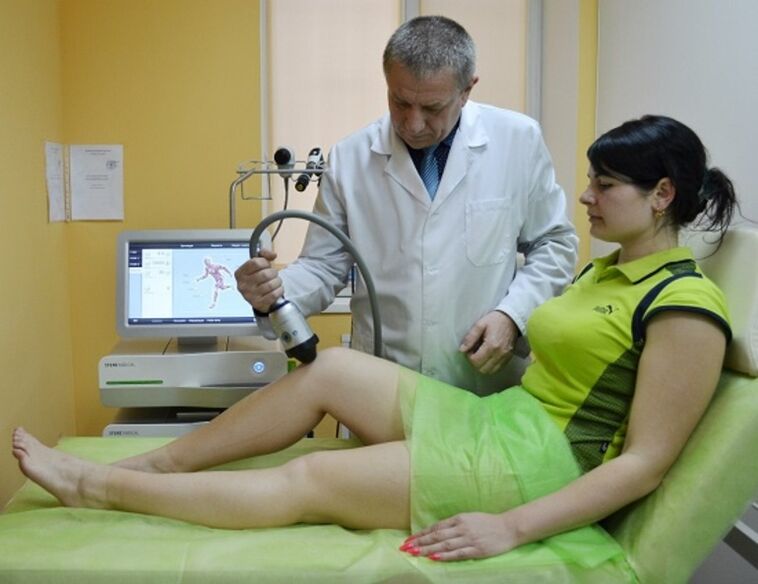
However, the inflamed joint will still feel, so the patient should seriously review his lifestyle.It will also be necessary to pay much attention to physiotherapy exercises, proper nutrition and adequate physical activity.
As a prevention, it is recommended to abandon the consumption of salted or spicy foods, alcoholic beverages and cigarettes.Such actions will positively affect the condition of the body and save the joint from unnecessary loads.
Comprehensive treatment of arthrosis in accordance with the above recommendations is the best way to stop dangerous pathology and restore previous work of knee joints.

















































